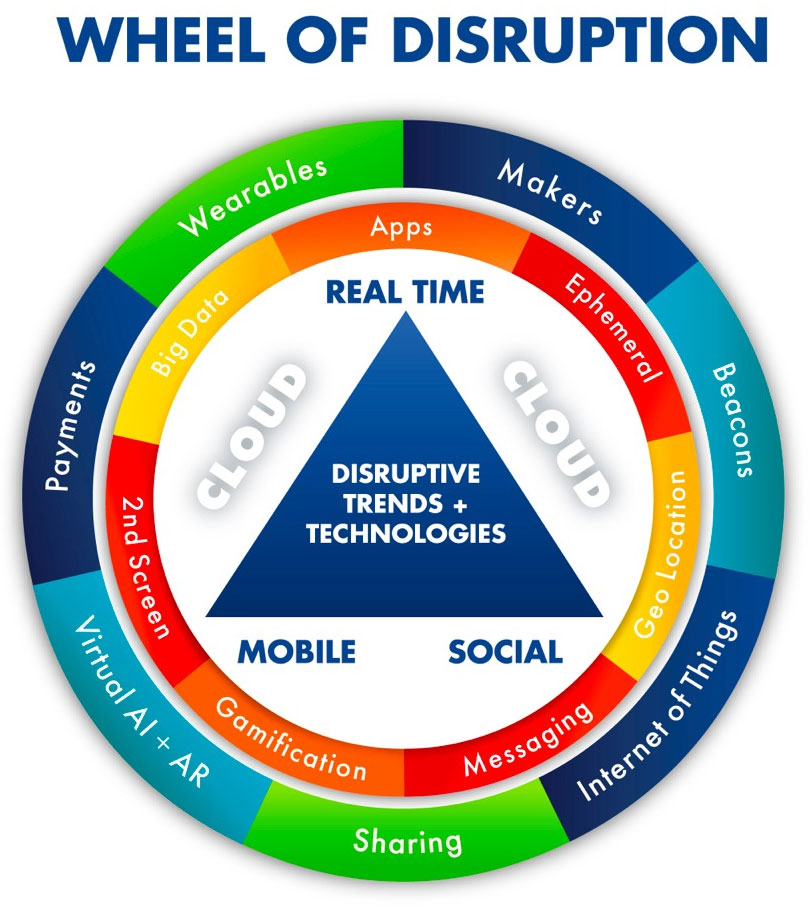Comprehensive Guide to Enterprise IT Service Automation
IT support automation uses software workflows, rule engines, AI/ML, and integrations to automate...
“The Internet and e-commerce were major disruptors, but what we’re seeing now is the biggest disruption ever from a technology perspective.”

“The Internet and e-commerce were major disruptors, but what we’re seeing now is the biggest disruption ever from a technology perspective.”
Those were the words (reflecting a notion previously explored here) of Adriana Karaboutis, CIO of Dell, discussing “what leading the digital enterprise means for today’s top IT executives” at last year’s MIT CIO Symposium. Karaboutis defines the current wave of technology disruption as everything from connected devices (the Internet of Things) and social media to wearables.

The panel focused on two strategies for addressing today’s unprecedented level of technological disruption: embracing digital technology in order to lead the change, and immersion in the customer experience in order to develop customer-centric technology processes.
For CIOs to to fully comprehend the scope of digital disruption and be prepared to take a leading role, Karaboutis advises other technology leaders to ““Embrace change so you can make change happen. Stop asking people what they want. If Henry Ford had asked people what they wanted, they would have said faster horses.”
The first key challenge then is to understand the technology landscape and anticipate customers’ needs. Most people focus, quite naturally, on their immediate problems at hand (hence the desire a century ago for faster horses).
To think beyond that level, technology leaders first need to understand emerging technologies, their implications, and the experiences of others. For CIOs, that may mean following thought leaders in different technology areas (such as Vala Afshar, Glen Gilmore and other experts on the Internet of Things) as well as other sources of expert guidance for IT executives.
CIOs then need to apply that knowledge to customer issues in order to anticipate needs (something that’s always been part of our philosophy). Imagine the problem at hand is already solved. What’s the next requirement? And the next? What does—no, what can—the technology permit?
The second key strategy is creating a customer-centric digital ecosystem. Volumes have been written on this topic, and Verizon CIO Roger Gurnani had some interesting comments about customer immersion and digital engagement at the MIT Symposium.
What is too often overlooked however is the need to turn that same focus inward, to address the needs of an organization’s internal service “customers”—its employees. Workplace technology plays a key role in attracting and retaining talented employees, and as noted here previously, “Often, enterprises that offer convenient and user-friendly self-service capabilities for external customers fail to adopt such systems or approaches for delivering internal IT (or other functional) services to employees.”
One key example of this is enterprise request management (ERM)—a business efficiency approach which combines a single, user-friendly portal with back-end process automation to enable employees to request any type of service, resource, or product needed to do their jobs, from any shared services group (IT, HR, facilities, finance, etc.). It’s like Amazon.com within the enterprise.
Happy, technology-enabled employees make for happy, technology-empowered customers.
Two other considerations were not specifically addressed at the MIT Symposium but are important to note.
Despite the pace and magnitude of technological developments, not every system and component can be changed out at once. Most organizations still run many of their core enterprise processes on legacy systems. 355 of the Fortune 500 enterprises (plus thousands of other firms) still run mainframes.
Though such systems will eventually be replaced, in the meantime companies need to use flexible automation tools that enable them to build modern, web-enabled, mobile-friendly systems of engagement atop legacy systems of record–and to invest carefully in open-standards based tools that will work with what they have in place today as well as whatever they will have tomorrow.
No one is closer to business processes than the employees who deal with them every day. Empowering those people with IT-approved graphical workflow mapping tools gets business processes automated quickly, efficiently, and with minimal IT effort. Utilizing IT as a broker of services meets the need for speed while ensuring the results are compliant, compatible, and secure.
CIOs may indeed be experiencing “the biggest disruption ever” in terms of business technology, but the ride isn’t going to end. Rather, tech leaders will need to embrace agility, evolution, and anticipation in order to effectively manage waves of ongoing disruptive change.

IT support automation uses software workflows, rule engines, AI/ML, and integrations to automate...

Business process reimagined is the strategic renewal of how work gets done by combining modern digital...

You've probably noticed (what we're calling) the "logo-swap test" lately: all the AI ads in market sound...